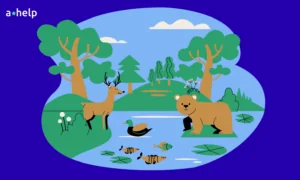By Robin Walsh

✅ AI Essay Writer ✅ AI Detector ✅ Plagchecker ✅ Paraphraser
✅ Summarizer ✅ Citation Generator
Clive Hamilton has written a remarkable book. He has managed to take environmentalism and strip out its positive aspects—its utopianism and humanitarianism, its impulse to change the world—and distil its worst—its authoritarianism, its simultaneous superstition and scientism, its apocalyptic pessimism, and its tendency to dress deeply reactionary ideas in cod-radical language.
Hamilton’s thesis is that we are too late; all the carbon counting, Copenhagens, and Climate Camps are in vain, as humanity is doomed to destruction by runaway climate change, and there is nothing we can do about it. Any different conclusion, from ‘denial’ to green attempts to ‘save the world’ stems from delusion and possibly psychologically damage. His bleak prospectus echoes the ‘Dark Mountain’ manifesto—reflecting a new emergence of deep green tendencies within environmentalism.
Unsurprisingly, Hamilton informs us that ‘there’s no escaping the science’. In the first chapter, he argues that we are rapidly racing to 650 ppm of CO2 in the atmosphere, that this level of CO2 will unleash catastrophic feedback loops, and the political and technological actions supposedly needed to avert this are impossible to complete in time. But for a man, and a movement, that today allegedly puts such great store by ‘the peer-reviewed science’, the rest of the book shows a surprisingly open contempt for science and scientific endeavour. This anti-scientific bent has previously been prevalent in the environmentalist movement, but savvier commentators, such as George Monbiot, have attempted to downplay this in recent years.
Hamilton starts off on this track gently enough, condemning economists for their ‘emotional distance, autonomy, ‘hard’ knowledge, rationality and disinterestedness’. While liberal economists can rightly be condemned for many things (their pro-capitalist bias, their superficiality), I would argue that their aspiration for impartial rationality is not one of them. But Hamilton goes further. For him, the aspiration to scientific rationality is part of the ‘hubristic’ disconnection from nature that is causing global warming in the first place. He condemns the Cartesian conception that the world is ‘no more than matter and motion… ruling out an inner essence or form’, instead lauding romantics like Wordsworth, and even pre-modern thinkers such as Thomas Aquinas, for their more ‘holistic’ views.
Hamilton attempts to claim Newton as a supporter, showing how he understood nature as a ‘perpetuall [sic] circulatory worker’ in a constant state of transformation and renewal. Hamilton seems to be wilfully conflating the fact that there is constant motion in the natural world, which is what Newton is clearly arguing and no one would deny, with a superstitious idea that the natural world is somehow ‘alive’.
Hamilton casts his eye over James Lovelock’s Gaia hypothesis of a self-regulating biosphere. Although Lovelock claims the earth is alive (by redefining life as the mere fact of resisting entropy, rather than by any traditional standard), Hamilton considers this too rigorous and scientific a conception; ‘in disowning all teleology Lovelock has returned us to a mechanical world in which a “living Earth” can be no more than a metaphor’. He keeps digging—approvingly citing white-supremacist South African Premier Jan Smuts for his enlightened ecological understanding, seemingly unaware that this compassion for the non-human world might have something to do with his contempt for an entire tranche of humanity.
Hamilton’s superstitious perspective finds full expression in his final chapter, where his pseudo-religious fetishisation of nature is revealed in all its glory: ‘as the climate disruption unfolds and the sky seems to turn against us, we will abandon the lesser gods of money, growth and hedonism and turn to the celestial god, the creator god who alone has the power to save us’.
In propounding this gaping contradiction between ‘The Science’, which compels us to obey nature, and plain old science, which is hubristic, masculine, and too scientific, Hamilton has done us a service. He reveals in stark terms the attitude of contemporary environmentalism, and mainstream politics more broadly, to science; it is a body of facts external to a passive humanity, which restrains and controls us in various ways—as witnessed as much by the discussion on binge drinking as on climate change. This stands in stark contrast to science as a critical, human process of developing objective understanding and control of the natural world—exemplified by those areas of science considered most problematic, such as synthetic biology, pharmaceuticals, and nuclear power.
In Hamilton’s book, this passivity is not just scientific; it is economic, technological, and social. He lists the catastrophic effects that climate change will have on the poorest, but fails to question the (social) reasons for their poverty. Indeed, when the poor dare improve their circumstances, they are guilty of ‘growth fetishism’, and in future ‘efforts to constrain emissions will have to focus on Chinese consumers’.
His critique of those who disagree with him is entirely psychological. Hamilton starts his chapter on ‘denial’ by recounting the tale of the ‘cognitive dissonance’ suffered by a 1950s doomsday cult whose apocalyptic predictions failed to materialise; an ironic choice for a thinker in a tradition which has consistently predicted (as yet unrealised) ecological disaster since the 1790s. He goes on to split humanity into three psychological categories: independent, interdependent, and metapersonal modes of self-construction. The first ‘values autonomy and self enhancement’, the second ‘connection with others’, the final ‘describes a sense of self inseparably connected to all living things or some wider notion of the Earth or cosmos’. No prizes for guessing which Hamilton prefers.
This psychological digression of Hamilton’s reveals the profoundly alienated nature of environmentalism; self interest or care for others is dismissed as ‘anthropocentric’, and his dislocation from other human beings has to be compensated for by an imaginary friend in the shape of the natural world. This isolation reflects the often commented-upon middle class nature of environmentalism, horrified by the traditional, vigorous self-interest of the bourgeoisie and the collective self-defence of the working class.
Acting merely as consumers, environmentalists are obsessed with consumption, unable to grasp production, or a productive solution to environmental or social problems. They perceive society as running out of control, and narcissistically understand their precarious personal social position as the fragility and potential collapse of the entire world. Hamilton’s book reveals the reactionary, reified, religious, and revoltingly inhumane nature of environmentalism, and as such, is a revealing counterpoint to the affected scientific airs and radical poses of authors such as George Monbiot. I am certain that Hamilton’s requiem for humanity is premature, but his book and others like it are signing the death warrant for environmentalism’s pretentions to being anything other than conservatism dressed up for the 21st century.
————–
Written under a Creative Commons License, with edits: https://creativecommons.org/licenses/by/1.0/
Follow us on Reddit for more insights and updates.





Comments (0)
Welcome to A*Help comments!
We’re all about debate and discussion at A*Help.
We value the diverse opinions of users, so you may find points of view that you don’t agree with. And that’s cool. However, there are certain things we’re not OK with: attempts to manipulate our data in any way, for example, or the posting of discriminative, offensive, hateful, or disparaging material.